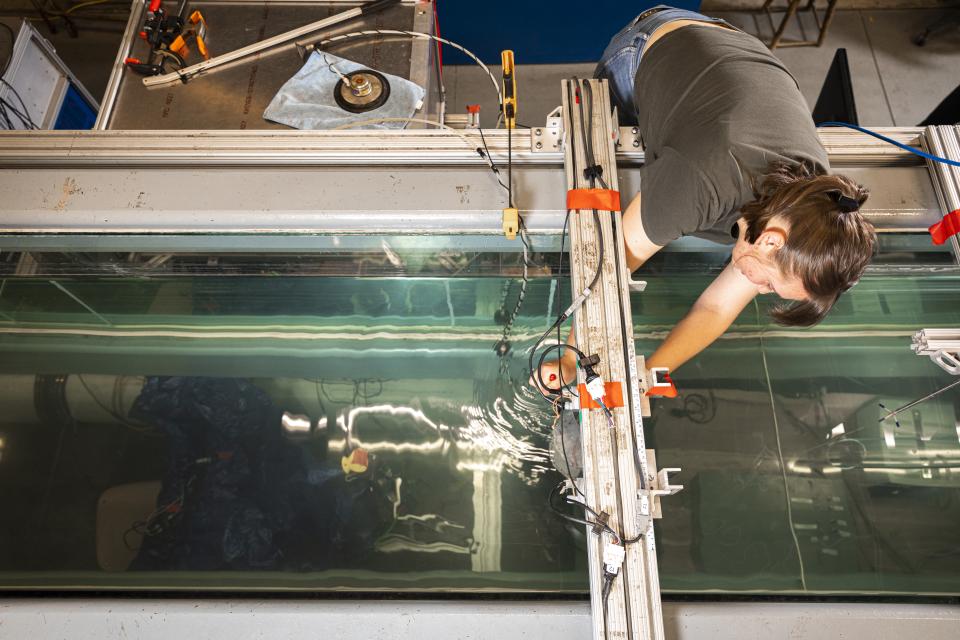Blade Integrated Collision Detection Project
Existing methods to monitor for potential collisions between marine animals and tidal turbine blades include optical cameras and acoustic cameras (sonars). While these methods can provide valuable information about animal behavior around tidal turbines, it is often challenging or impossible to determine whether a collision occurred or what the potential effects on the animal may be. Triton’s Blade Integrated Collision Detection (BICD) project tests a new method to monitor for collisions between marine animals and tidal turbines using sensors integrated into turbine blades. Strain gauges embedded in turbine blades can monitor the structural health of the blade, providing valuable information for turbine developers on maintenance requirements. With this project, the team is researching how strain gauges could also be used to detect collisions with an animal.

To understand whether this is possible, the team collaborated with the Pacific Marine Energy Center and the University of Washington’s Harris Hydraulics Laboratory to conduct scaled experiments in a flume to test strain gauge sensitivities and determine whether detection is feasible. Flumes are constructed channels in laboratories where water can flow through in a controlled environment. For these studies, a small-scale tidal turbine with strain gauges affixed to one blade was placed in the flume. Silicone animal models were released upstream and allowed to collide with the turbine. The recorded data indicate that strain gauges are suitable to detect collisions in controlled settings, like the flume, but more work is needed to understand how this might scale to larger turbines or more turbulent flows characteristic of actual tidal energy sites.
The next phase of the BICD project aims to determine whether collisions can also be detected under realistic flow and turbulence conditions. To achieve this, the BICD team will conduct another round of testing at the University of Washington’s Alice C. Tyler flume, leveraging new capabilities to produce more turbulent flow. This test will also be co-supported by the Testing Expertise and Access to Marine Energy Research (TEAMER) program. Ultimately, this research could serve to build a foundation for future in-water research or the development of collision mitigation strategies—real-time detection of collisions could potentially be integrated into turbine control schemes to reduce the speed of the blade, and consequently, lessen the impact to the animal.
Read more about the project:
- Testing Collision Risk Solutions: Can the Turbine Itself Be the Answer?
- Triton Explains: Collision Risk Research
